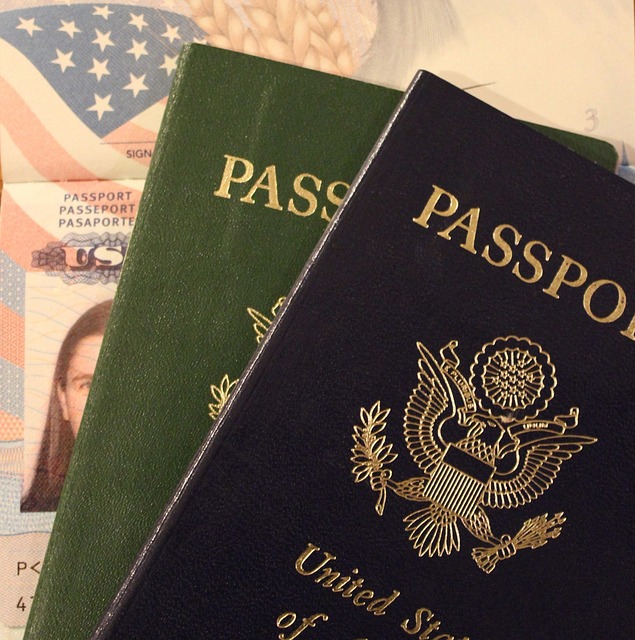Rapid Translate Team
Foreign country citizens intending to travel to the U.S. must first get a visa to enter the country. A valid visa indicates that a consular officer at the American Consulate or Embassy has checked the immigration application. However, several immigrant visa types exist, each depending on various factors.
The purpose of traveling is a significant factor in determining the appropriate visa type for you. Thus, properly understanding these types is essential to ease your immigration journey. This blog post explains the various immigrant visa categories and their eligibility criteria. Read on to learn all the details about visa types for immigrants.

Table of Contents
What Are Visas for Immigrants?
An immigrant visa is a category issued to persons intending to live and work permanently in the U.S. A foreign national can get an immigrant or nonimmigrant visa to enter the U.S. However, visas for immigrants are what make a foreign national a permanent resident in the U.S.
As a permanent resident or green card recipient, the person can work and live anywhere in the U.S. They may also apply to become American citizens if they meet specific eligibility requirements. People often mistake the visa categories for each other, but there is a difference between them.
A nonimmigrant visa is for people from foreign countries seeking to enter the U.S. temporarily. The purpose of their visit may include tourism, business, study, medical treatment, temporary work, or other temporary reasons. The purpose of travel and other factors determine the visa category needed under the U.S. immigration law.
During visa applications, a consular officer will determine the applicant’s eligibility for a visa based on the laws. The only criterion is meeting all the requirements to receive the appropriate visa category.

Application Process for the U.S. Immigrant Visa
As explained previously, a visa for immigrants is a foreigner’s ticket to permanent residence in the U.S. An intending immigrant must present this visa at the U.S. port of entry before it expires. Then, the U.S. Customs and Border Protection (CBP) reviews the visa and supporting documents.
If the immigrant is eligible, a CBP office approves the documents to make the immigrant a lawful permanent resident. Typically, this visa category requires someone to apply on behalf of the immigrant. Usually, an employer or relative is responsible for sponsoring the immigrant.
This involves the sponsor applying to the U.S. Citizenship and Immigration Services (USCIS). Alternatively, certain applicants, such as workers with extraordinary abilities, special immigrants, and investors, can petition on their behalf. After this, the appropriate U.S. Consulate or Embassy located overseas receives the application for further processing.
The consular officers then issue the visa to an eligible intending immigrant. The immigrant must present the visa at the port of entry into the U.S. A CBP officer will inspect to determine the person’s eligibility under U.S. immigration law.

The Various U.S. Immigrant Visa Types
You can get a visa for immigrants to stay in the country permanently. However, you must have a purpose for coming into the U.S. with this visa category. Your purpose and other factors will determine the type of permanent visa you get. This is why we’ve explained the various visa types under this category to help you understand better.
IR1 and CR1
An IR1 or CR1 visa is for a legally wedded spouse of a U.S. citizen. Couples merely living together may not qualify as spouses for immigration. However, some country’s common law marriages may qualify. This eligibility depends on the laws of the country where the marriage occurred.
In addition, only the first spouse of a polygamous marriage may qualify as a spouse for immigration. In this visa-type application process, the resident spouse must file a petition with the USCIS.
IR2, CR2, IR5, F1, F3, and F4
IR2, CR2, IR5, F1, F3, and F4 are family-based immigration visas to relocate to the U.S. There are two family-based visas permanently. They include:
- Immediate relative: These visa types are for close family members of a U.S. citizen, such as a spouse, parent, or child.
- Family preference: These types are for more distant family relations with U.S. citizens. They are also useful for some specific relationships with lawful permanent residents.
U.S. citizens can apply for their spouse, siblings, children, or parents. However, a permanent resident or green card holder can only file immigration petitions for their spouse and unmarried children.
IR3, IH3, IR4, and IH4
These visa types are for certain family members of U.S. citizens. These include children adopted in the U.S. and children adopted from foreign countries. Naturally, these children should permanently live with their adoptive family, and hence, they need a visa for this.
F2A and F2B
These are also family-based visas for spouses, children, and adult children of lawful permanent residents or U.S. citizens.
K-3
The K-3 is a nonimmigrant visa for foreign nationals who are spouses of U.S. citizens. Although it is a temporary visa, it helps reduce the separation between the spouses. The foreign spouse uses this visa to enter the U.S. while waiting for approval for a permanent visa petition.
Upon the petition approval, K-3 visa recipients apply for permanent residency with the USCIS. This means the U.S. citizen spouse must have filed the petition on behalf of their foreign partner.
K-1
A K-1 nonimmigrant visa is for a foreigner who is a fiancé(e) to a U.S. citizen. This visa permits them to travel and marry their partner in the U.S. within 90 days of arrival. After this, the foreign spouse will apply to adjust their status to a permanent resident at the USCIS.
Employment Visas
Employment-based permanent visas cover a large group of people. These include:
- EB-1: First preference for priority workers.
- EB-2: Second preference for professionals holding advanced degrees and persons of exceptional ability.
- EB-3: Third preference for professionals, skilled, and unskilled workers.
- EB-4: Fourth preference for certain special immigrants.
- EB-5: Fifth preference for employment creation and investors.
Other immigrant visa types include:
- SD and SR: Religious workers
- SI: Iraqi and Afghan translators and interpreters
- SQ: Iraqis and Afghans who worked for/on behalf of the U.S. government
- DV: Diversity immigrant visa
- SB: Returning resident

Translation Requirements for Immigration Applications
Getting the appropriate visa is a significant part of entry into the U.S. However, getting everything right depends on the USCIS understanding your supporting documents. This is why a major requirement for immigration applicants is to translate their foreign language documents into English.
This includes birth certificates, marriage certificates, passports, and divorce certificates. Translating your documents is easy, but accuracy and certification make them suitable for the USCIS. Hence, it is best to get a USCIS-certified translation from a professional translator who understands the immigration process.
This would guarantee your approval at the agency. Luckily, Rapid Translate offers premium-quality translations that fulfill all the USCIS translation requirements. Our professional translation company offers online-certified services at the lowest prices. We provide translations in over 60 languages within the fastest turnaround times.
Rapid Translate covers its customers on their journey for various immigrant visa types. Join our large group of happy and satisfied customers today. Order now to enjoy the benefits of accurate immigration translations!




